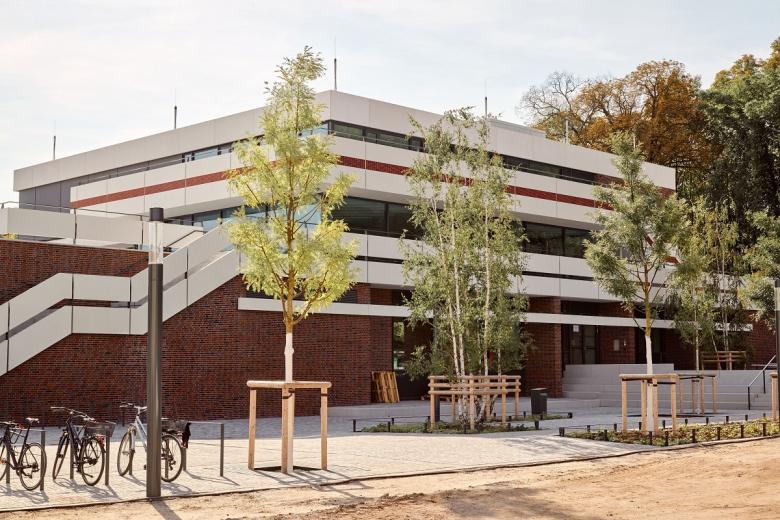DAS MINSK Kunsthaus, Potsdam
Potsdam, Germany

Art, culture and ventilation technology
The new MINSK Kunsthaus in Potsdam is one of the best-known revitalisation projects in the country. The new building based on a historical model was constructed on the site of the former "Minsk" terrace restaurant on the Brauhausberg. To protect the exhibits, ventilation technology with displacement air diffusers ensures a stable indoor climate and the most pleasant possible atmosphere for visitors.
After two years of renovation, the new MINSK Kunsthaus opened its doors to art and culture lovers in 2022. While the exterior cubature is still strongly reminiscent of the former GDR restaurant, the interior has been stripped back to the supporting structure and rebuilt - according to a design by the architects Heinle Wischer und Partner.
Requirements for technical building equipment set high standards
The ventilation and air-conditioning technology in particular required detailed planning in advance. This is because exhibition rooms are subject to conservation requirements; among other things, a stable room climate must be guaranteed in order to protect the works of art. At the same time, it is important to create a pleasant atmosphere of well-being for the museum public by providing an ideal draught-free room climate. Ingenieurgesellschaft Scheel, Berlin, is responsible for the technical building planning.
For example, INDUQUELL ceiling diffusers are installed throughout the exhibition rooms. Norbert Hinderer, sales engineer at Kiefer, explains: "With conventional displacement outlet systems, the supply air is fed into the rooms with low turbulence. Low air velocities in the usable area of the rooms are therefore characteristic. In contrast, INDUQUELL enables low room air velocities even at high temperature differences of up to -8 K. The combination with the inductive air guide elements developed by Kiefer also ensures that the air diffusers function almost silently - ideal for use in museum buildings."
Displacement air systems are predominantly developed individually for the building and tasks. INDUQUELL is designed here as a mixed air diffuser. The arrangement of the air outlets between the luminous ceilings of the exhibition rooms required a special design of the air distribution boxes. "Via an additional air scoop above the plenum box, a horizontal connection to the AHU ductwork could be made. The result was a reduction in the installation height for the air outlets and the air handling ductwork. Due to constraint points of the RLT duct network, the air scoops had to be mounted partly asymmetrically above the air distribution boxes," explains Hinderer.
Air flow investigation to evaluate air distribution and room acoustics
The indoor air flow was confirmed and validated by an external flow study at an early planning stage. In order to ensure that all technical building challenges were met and that disruptive influences could be evaluated or excluded, a laboratory test was carried out in Kiefer's own air flow laboratory. This involved testing and evaluating various perforated sheets with regard to optimum air distribution and confirming compliance with the required values for room acoustics. Subsequently, an elaborate ceiling sample field consisting of illuminated ceilings and air diffusers was created and final colour decisions were made. For the air diffusers, this resulted in the need for additional side panels in order to achieve a uniform overall appearance of the RLT installations next to the luminous ceilings.
The air supply for the café with adjacent roof terrace and for the staff rooms is provided by the INDUL linear diffuser. The filigree diffuser profiles fit into any desired ceiling architecture and keep ceilings dust-free for longer. Due to the specially developed discharge geometry, the supply air is split into fine alternating free jets, intensifying the induction of the room air. This in turn enables a very high temperature difference between room and supply air and, in particular, the use of free cooling. The required cooling capacity is reduced to a minimum and ensures a high energy-saving potential.



- Manufacturers
- Kiefer Klimatechnik GmbH
- Year
- 2022
- Client
- Hasso Plattner Foundation
- Team
- Heinle Wischer Partnerschaft freier Architekten mbB, Ingenieurgesellschaft Scheel mbH





